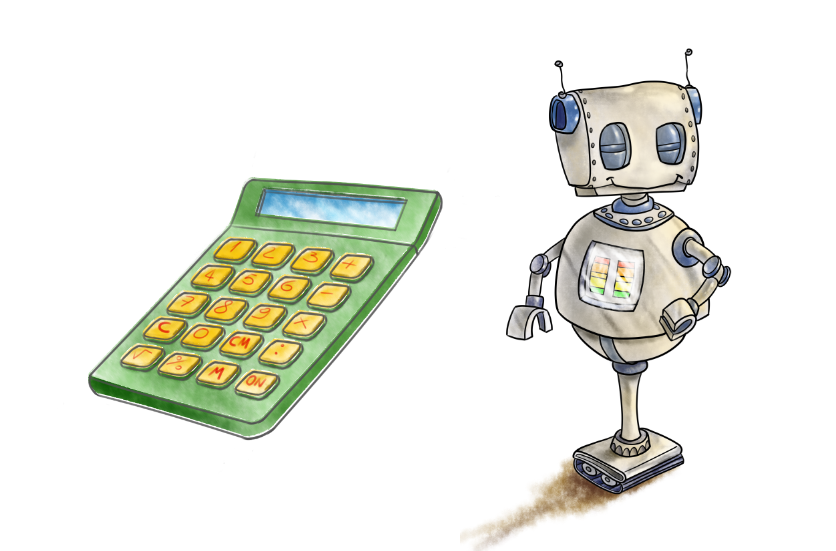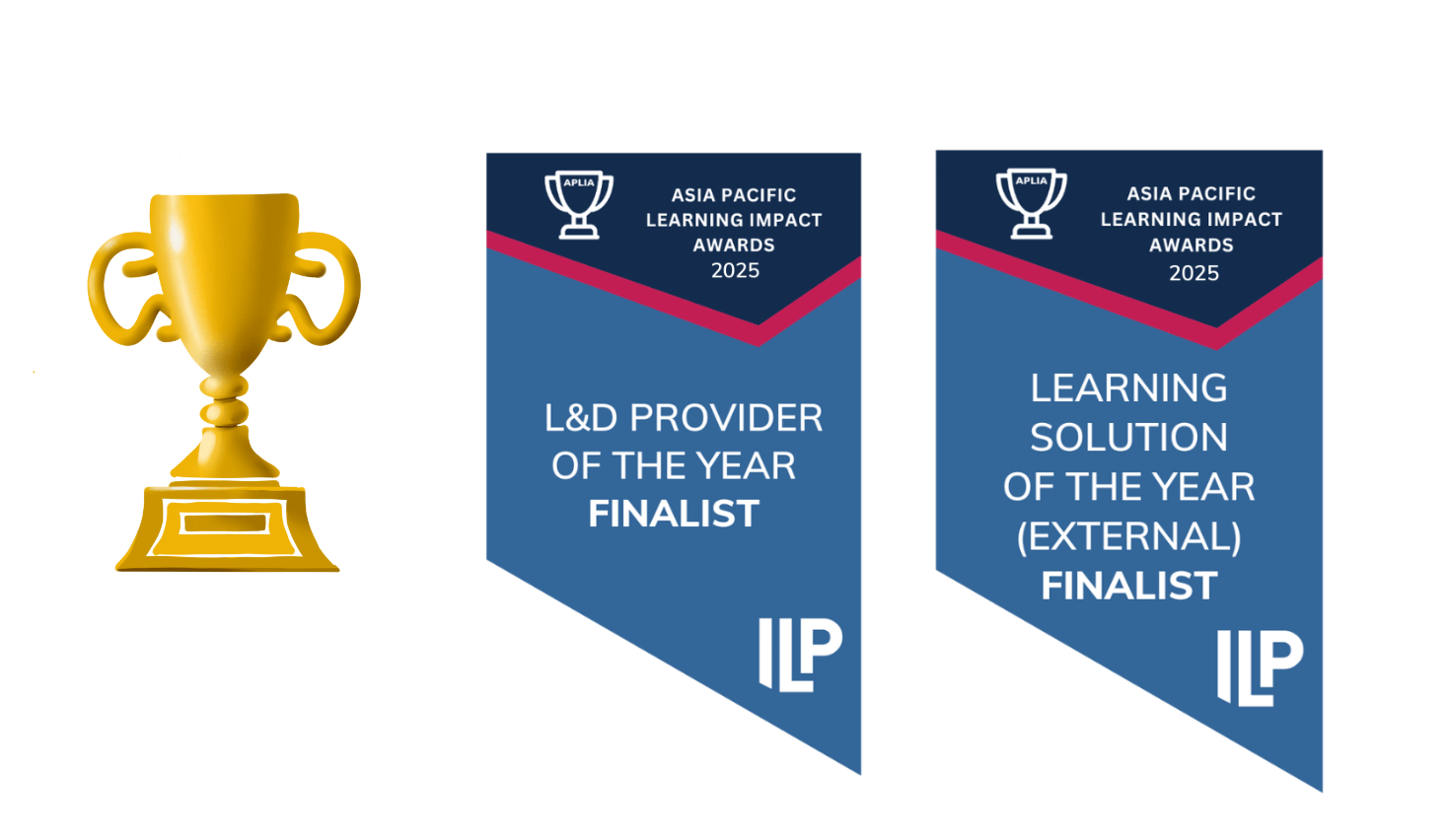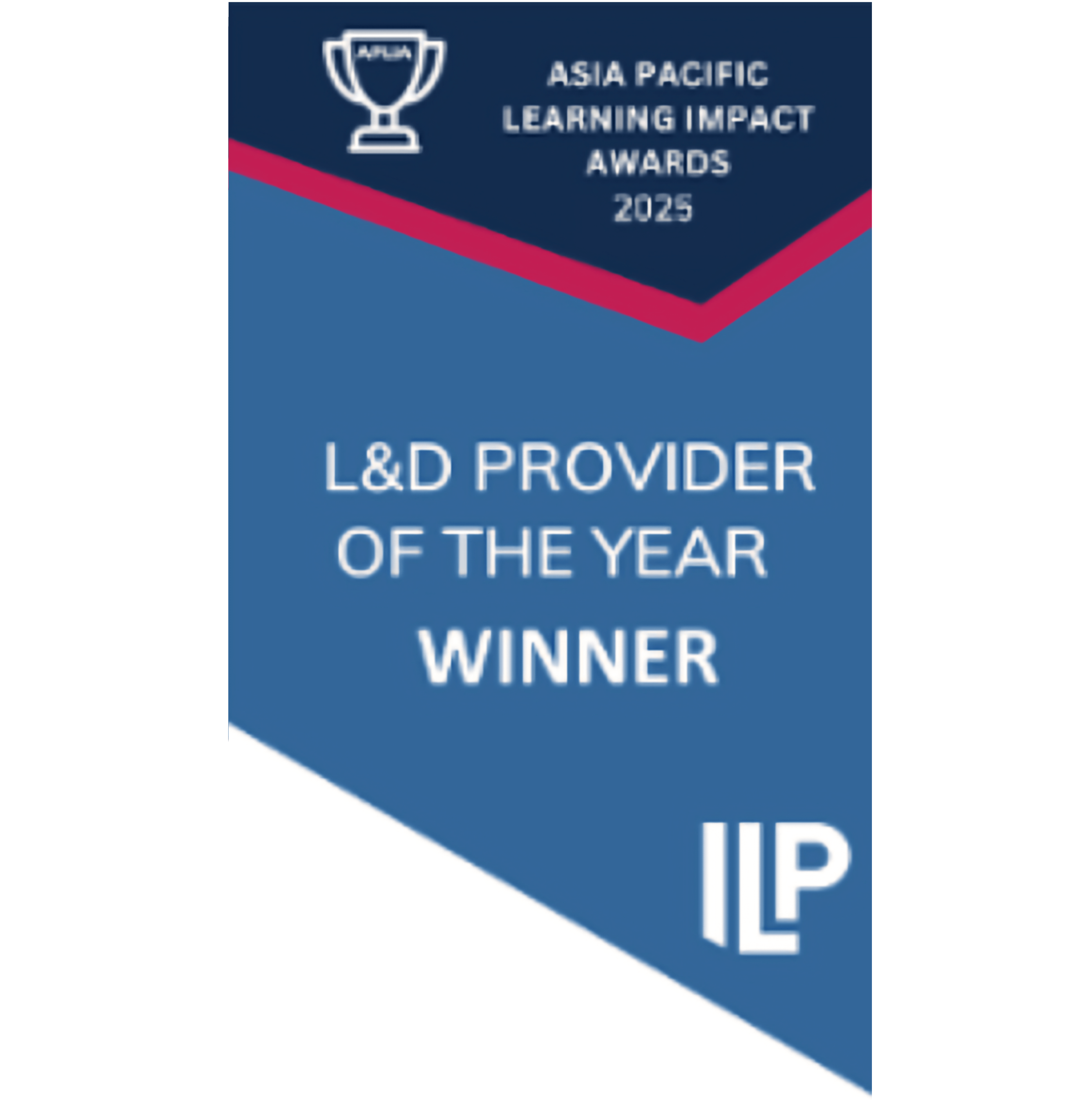
Learning & Development managers, corporate trainers, and HR managers are always on the lookout for new ways to get the best outcomes for learners, often within the constraints of their limited budget and time. So it’s no surprise that the AI-generated boom and new ideas over new ways of creating learning content that ChatGPT and other AI-based tools have brought to the industry are being cautiously, but excitedly welcomed.
While AI has been around for some time, it has evolved to become more efficient, accessible, and valuable than ever before. And we’ll say it now: it’s nothing to be afraid of, but it is something that’ll soon be impossible to ignore.
So in this blog post, we’re digging into the benefits and potential drawbacks of using AI-based tools, such as ChatGPT, in your learning content creation process.
A quick guide to AI and LLMs
Before diving into the details, let's clarify what we mean by AI and LLMs.
AI, or artificial intelligence, refers to developing computer systems that can perform tasks that typically require human intelligence. Pretty simple.
Large Language Models, such as ChatGPT, are examples of AI applications designed to process and generate human-like text based on given prompts. Note how we specifically say human-like here – it’s an important distinction we’ll get to later.
While ChatGPT is a popular and widely-known AI-based tool, it's important to note that numerous other AI tools are available for instructional designers and L&D managers. These tools can and do greatly enhance the efficiency and effectiveness of the entire content creation workflow.
Now, let's explore how these tools work and where they get their information.
AI-based tools like ChatGPT are trained on vast amounts of text data from the internet. ChatGPT itself is trained in three stages: generative pre-training, supervised fine-tuning, and reinforcement learning based on human feedback. This YouTube video does a pretty good job of simplifying (as much as possible) how the training regime works.
However, no matter how well-trained your latest AI pet is, it's crucial to understand that their training data only extends until September 2021. This means that the information and statistics they provide might not be correct or up to date. So it goes without saying that it's essential to cross-reference any AI-generated information with recent and reliable sources.
When it comes to deciding which information to provide based on your prompts, AI-based tools employ sophisticated algorithms and natural language processing techniques. They analyse the context and structure of the prompt and generate responses accordingly.
Basically, ChatGPT takes an educated guess (at lightning speed) of which word is most likely correct to put next, based on exactly what you request from it. This means it’s important to remember that the generated content's quality and relevance heavily depend on the prompts you provide.
Things to be wary of before using AI-based tools for creating learning content
While AI-based tools offer incredible possibilities (according to industry leader Josh Bersin, EdTech is going nuts for it), there are specific considerations to keep in mind before going nuts yourself. Just a few of them include:
Accuracy of data
As mentioned earlier, AI models like ChatGPT have a knowledge cut-off and might not have access to current information. For content that needs correct, up-to-date information (say, about regulatory updates or current market information), it’s probably best that content creators do the heavy lifting themselves.
Distraction
We know – the shiny new tool that can seemingly do hours of work in minutes is awfully alluring. But the allure of AI-based tools can (don’t ask me how) lead to spending excessive time on generating prompts instead of creating content. It's important to strike a balance and use these tools as aids rather than complete replacements for human effort and creativity.
Learning curve
Following on from the last point, it requires effort and skill to craft effective prompts to achieve optimal results from AI-based tools. Prompt engineering has become a specialised field (prompt engineer jobs are popping up left and right), emphasising the need to invest time and effort into developing prompts that yield high-quality results.
Loss of human touch
AI-based tools lack the human touch that brings humour, puns, cultural references, or company-specific elements to learning content. While AI can assist in generating content, it's essential to infuse it with the unique qualities that reflect your organisation's culture and style.
IP and data security
Like anything you post on social media is in some way there for eternity; there’s no getting back the information you’ve put into AI tools like ChatGPT. When using these tools, it’s important to be mindful of data security and ensure compliance with information property rights.
It’s not like shaking a magic 8 ball – you need to understand the terms and conditions of the tools you use, and safeguard sensitive data. Better yet, don’t provide sensitive data at all, and assume any data you input into AI tools is somehow fed back into the model.
This is especially important when you’re handling company data (like intellectual property and trade secrets) and customer data, due to the potential reputational, and financial losses – not to mention loss of trust.
Things Instructional Designers and L&D managers should use AI-based tools for
Now that we've explored the considerations, let's focus on the areas where AI-based tools can be a game-changer:
Automating repetitive tasks
AI tools can automate various repetitive tasks, such as applying consistent styling and formatting, creating tables of contents, transcribing/captioning, and establishing a content hierarchy of learning materials. By automating these tasks, instructional designers can save significant time and effort, allowing them to focus on more creative and strategic aspects of content creation.
For example, I used ChatGPT just the other day and the response had been formatted in a really easy-to-read way and I was able to use it without much tweaking at all, saving me time and brain power. Win-win!
Speeding up content creation
AI-based tools excel at quickly generating content on certain topics. For example, when creating learning content based on publicly available information (up until September 2021, just to be sure), AI can swiftly generate summaries, overviews, or updates. It can do the same for data you provide, like copy-pasted text from a PDF. Easy peasy.
Creating and enhancing multimedia assets
If there’s ever been a time to ditch cringe-worthy stock images for good, it’s now. AI tools offer alternatives to stock images, making learning content more visually engaging for learners. AI-powered image recognition and recommendation systems can even suggest relevant and diverse images, reducing the need to search through extensive libraries or engage graphic designers.
Localisation, translation, and adaptation
The need for localised and translated content grows as companies and their customer bases expand globally. AI-based tools can assist in automating the localisation and translation process, ensuring accurate and (sometimes) culturally appropriate content. Instructional designers can focus on refining and adapting the content to specific contexts while leveraging AI for the heavy lifting.
Things you probably shouldn’t bother using AI tools for (yet)
Personalised or sensitive topics
AI-based tools like ChatGPT don’t possess the understanding and empathy required to provide high-quality personalised or sensitive content, and particularly not personalised feedback to learners.
Feedback plays a critical role in the learning process, and human instructors are better equipped to deliver tailored guidance, address individual needs, and provide constructive criticism that considers each learner's unique circumstances.
So while it’s possible to build personalised learning feedback into a platform using AI, it’s best to keep that part on the humans’ desks.
Contextual adaptation and complex decision-making
AI tools excel at processing large volumes of data and generating responses based on patterns and pre-existing information. However, human expertise and judgement are essential when it comes to complex decision-making or adapting content to specific contextual factors. Instructional Designers can evaluate nuanced situations, consider diverse perspectives, and make informed decisions that align with the learning objectives and specific learner requirements.
Injecting creativity and emotional engagement
AI-based tools may struggle to inject the desired level of creativity and emotional engagement into learning content. Humour, storytelling, and emotional connections are vital elements in capturing learners' attention, fostering interest, and promoting deep engagement. Like a guy on the internet once said: More LoL, More Learn.
It’s not to say that you can’t get ChatGPT to write a joke for you, but it’s going to be pretty obvious. Case in point:

Learning content creators and instructional designers, on the other hand, actually possess the ability to infuse their content with these essential elements, tailoring them to the specific audience and ensuring a more meaningful and impactful learning experience. In other words, they can read the room.
Timeliness and accuracy
LLMs are trained on data only up until a certain point. Training the model takes a lot of work, and having a continually trained model is almost out of the question (at least for the foreseeable future).
Regarding current news topics, instructional designers need to provide learners with accurate and up-to-date information — so relying on ChatGPT for such content (without cross-referencing yourself) may result in outdated or incorrect information being presented to learners, compromising the accuracy and relevance of the training. Awkward.
Internal company knowledge
ChatGPT and similar tools rely on publicly available data from the internet rather than proprietary or internal company knowledge. For training content that requires specific knowledge unique to a company, such as internal processes, policies, or product information, AI-based tools likely won’t have access to the specific and confidential data required to create accurate and tailored content. Instructional Designers, on the other hand, possess the internal knowledge and insights necessary to develop training materials that align with the organisation's specific needs.
Contextual understanding and nuance
AI models like ChatGPT lack the contextual understanding and nuance required for training content creation that involves company-specific information or industry-specific jargon. Instructional Designers possess the expertise to interpret and incorporate the intricacies of internal company knowledge, adapting it to the learning context and the target audience's needs. They can craft content that reflects the organisation's culture, values, and unique requirements, ensuring a more meaningful and relevant learning experience.
How modern learning techniques lend themselves to harnessing AI
The ultimate goal of learning at work is to help people do their jobs better, or in other words, to drive behaviour change and create business impact through learning. And generative AI tools really do help instructional designers of all kinds in creating content that goes beyond simple knowledge acquisition and into the realm of behaviour change.
By leveraging data analytics and AI-driven insights, we can identify specific gaps in employees' skills and competencies. This information can then be used to effectively develop targeted learning interventions that address those gaps.
Modern learning techniques, like microlearning, spaced repetition, gamification, and team-based learning, jam pretty nicely with AI-based tools to make learning platforms better, content creation more efficient, and learning itself more effective.
What we’re doing, and planning on doing with AI at Yarno
At Yarno, we were keen to understand the opportunities and downfalls of using generative AI tools, so we formed a working group at the start of the year to find out more! It was from this working group that we set our internal AI policy and guidelines that must be adhered to when using any form of generative AI. As we’ve discussed above, these tools (while fun) aren’t all fun and games, and it’s super important to use them wisely and with purpose at work.
Currently, Yarno uses AI content generation tools for internal purposes only:
- Internal Yarno communications or processes
- Marketing & sales copy that only refers to Yarno or is on generic topics
- Brainstorming idea lists for internal projects or campaign content
- As a starting point for generic Questions or Explanations
We use them as a tool to help get the ideas flowing – because no one likes staring at a blank screen!
We do not use them for anything that includes personal or customer data or processes, because to us, the security risks are just too high.
However, we do see a big opportunity for our customers who write their own content and use the Yarno platform to deliver their daily quizzes. AI tools can be used to create explanations or plausible but incorrect answers, making the question-writing process quicker, and giving them back time in their day. The tools can provide a great foundation and structure for a question’s explanation. For example, I used ChatGPT to summarise the process of coupling a truck and trailer:

This response provides an overview of the procedure and then lays out the steps of the process in an easy-to-follow numbered list. Even the conclusion reminds me to check the specifics based on my own company’s requirements.
Here, you can start to see how this tool would be really helpful for subject matter experts creating their own content, as they could easily and quickly fact-check the responses.
In terms of how AI tools work together with learning techniques that we use in Yarno content and in our own product, we see the greatest benefits in microlearning. Since AI-based tools can help quickly create bite-sized learning modules and summaries, using them is ideal for creating microlearning bites. So if a subject matter expert or L&D manager has been tasked with taking a heavy training manual and distilling it down to its key points, AI tools can be a big help.
Conclusion
AI-based tools offer exciting opportunities to streamline content creation, automate repetitive tasks, and enhance the learning experience. While a very healthy dose of caution should be exercised regarding security, content accuracy, prompt engineering, and maintaining the human touch, the benefits of using AI in learning content creation are there.
In short, use the tools, but don’t let them rule you.
If you’re keen to chat more about using AI for learning content creation at Yarno, or perhaps you’d like to know more about how Yarno works – please contact us.
References
https://www.hurix.com/role-of-artificial-intelligence-in-learning-and-development/
https://www.td.org/atd-blog/10-immediate-uses-for-ai-in-learning-and-development
https://www.synthesia.io/post/why-and-how-to-use-ai-for-training-and-development
https://www.madcapsoftware.com/blog/the-impact-of-ai-in-learning-and-development/


















































































































